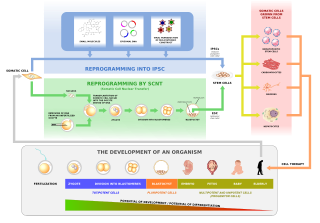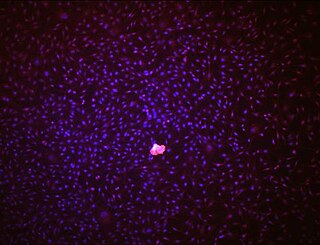Background
For many decades, stem cells have played an important role in medical research, beginning in 1868 when Ernst Haeckel first used the phrase to describe the fertilized egg which eventually gestates into an organism. The term was later used in 1886 by William Sedgwick to describe the parts of a plant that grow and regenerate. Further work by Alexander Maximow and Leroy Stevens introduced the concept that stem cells are pluripotent. This significant discovery led to the first human bone marrow transplant by E. Donnall Thomas in 1956, which although successful in saving lives, has generated much controversy since. This has included the many complications inherent in stem cell transplantation (almost 200 allogeneic marrow transplants were performed in humans, with no long-term successes before the first successful treatment was made), through to more modern problems, such as how many cells are sufficient for engraftment of various types of hematopoietic stem cell transplants, whether older patients should undergo transplant therapy, and the role of irradiation-based therapies in preparation for transplantation.
The discovery of adult stem cells led scientists to develop an interest in the role of embryonic stem cells, and in separate studies in 1981 Gail Martin and Martin Evans derived pluripotent stem cells from the embryos of mice for the first time. This paved the way for Mario Capecchi, Martin Evans, and Oliver Smithies to create the first knockout mouse, ushering in a whole new era of research on human disease. In 1995 adult stem cell research with human use was patented (US PTO with effect from 1995). In fact, human use was published in World J Surg 1991 & 1999 (B G Matapurkar). Salhan, Sudha (August 2011). [1]
In 1998, James Thomson and Jeffrey Jones derived the first human embryonic stem cells, with even greater potential for drug discovery and therapeutic transplantation. However, the use of the technique on human embryos led to more widespread controversy as criticism of the technique now began from the wider public who debated the moral ethics of questions concerning research involving human embryonic cells.
Potential use in therapy
Since pluripotent stem cells have the ability to differentiate into any type of cell, they are used in the development of medical treatments for a wide range of conditions. [2] Treatments that have been proposed include treatment for physical trauma, degenerative conditions, and genetic diseases (in combination with gene therapy). Yet further treatments using stem cells could potentially be developed due to their ability to repair extensive tissue damage. [3]
Great levels of success and potential have been realized from research using adult stem cells. In early 2009, the FDA approved the first human clinical trials using embryonic stem cells. Only cells from an embryo at the morula stage or earlier are truly totipotent, meaning that they are able to form all cell types including placental cells. Adult stem cells are generally limited to differentiating into different cell types of their tissue of origin. However, some evidence suggests that adult stem cell plasticity may exist, increasing the number of cell types a given adult stem cell can become.
Points of controversy
Destruction of a human embryo is required in order to research new embryonic cell lines. Much of the debate surrounding human embryonic stem cells, therefore, concern ethical and legal quandaries around the destruction of an embryo. Ethical and legal questions such as "At what point does one consider life to begin?" and "Is it just to destroy a human embryo if it has the potential to cure countless numbers of patients and further our understanding of disease?" are central to the controversy. Political leaders debate how to regulate and fund research studies that involve the techniques used to remove the embryo cells. No clear consensus has emerged. [4]
Much of the criticism has been a result of religious beliefs and, in the most high-profile case, US President George W Bush signed an executive order banning the use of federal funding for any stem cell lines other than those already in existence, stating at the time, "My position on these issues is shaped by deeply held beliefs," and "I also believe human life is a sacred gift from our creator." [5] This ban was in part revoked by his successor Barack Obama, who stated: "As a person of faith, I believe we are called to care for each other and work to ease human suffering. I believe we have been given the capacity and will to pursue this research and the humanity and conscience to do so responsibly." [6]










